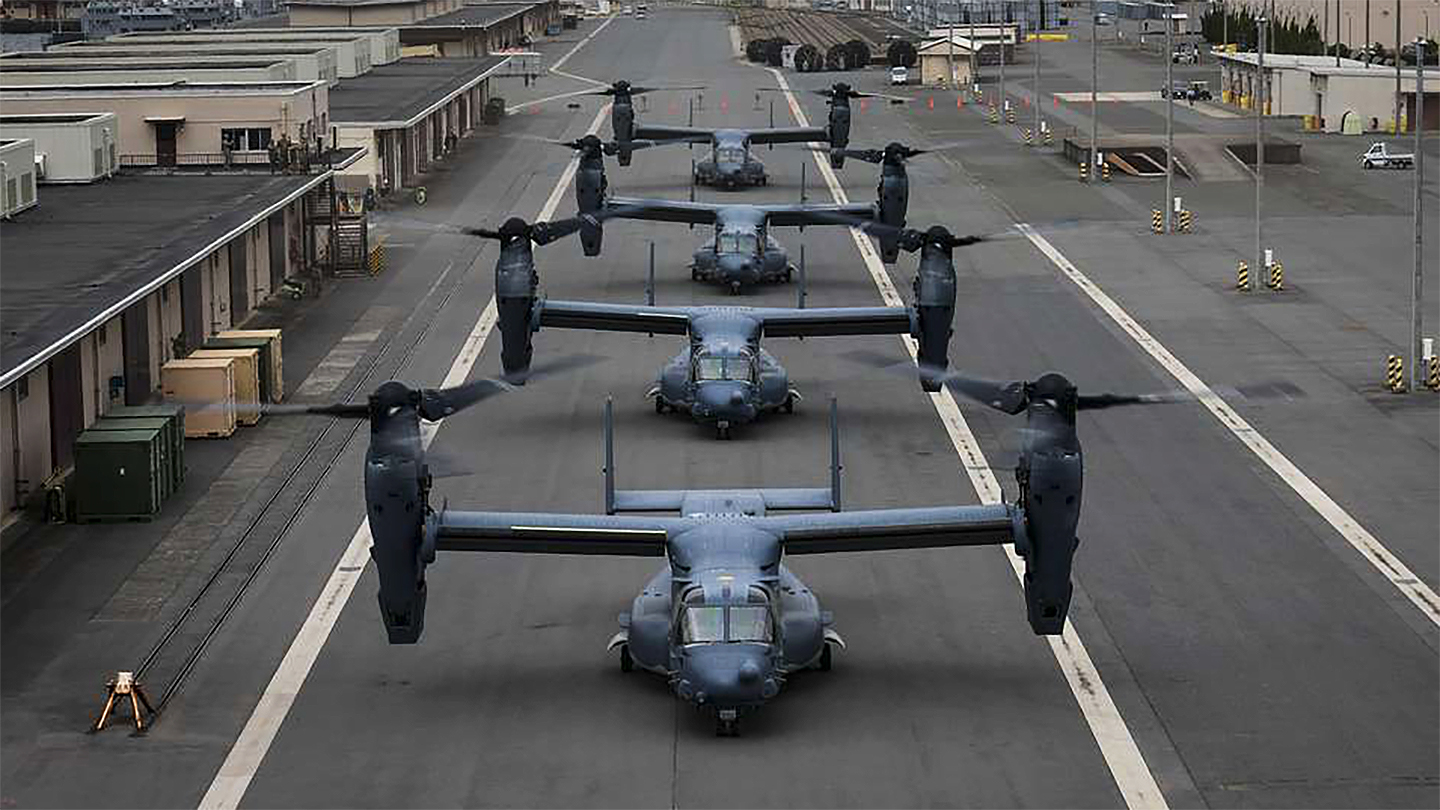U.S. Air Force Special Operations Command (AFSOC) has a “strong desire” to get its CV-22 Osprey tilt-rotors back in the air as a Defense Department-wide grounding of the tiltrotor aircraft enters its third month. But that’s not without serious misgivings and an eye to future capabilities, AFSOC Commander Lt. Gen. Tony Bauernfeind indicated Tuesday.
Bauernfeind, who spoke to reporters, including from The War Zone, at a round table during the Air Force Association’s Warfare Symposium in Colorado, cited the trio of investigations he’d commissioned after a Nov. 29 CV-22 crash off the coast of Japan left eight AFSOC crew members dead. In addition to safety and accident investigations, these include a comprehensive review of the airframe itself and how the service employs it.
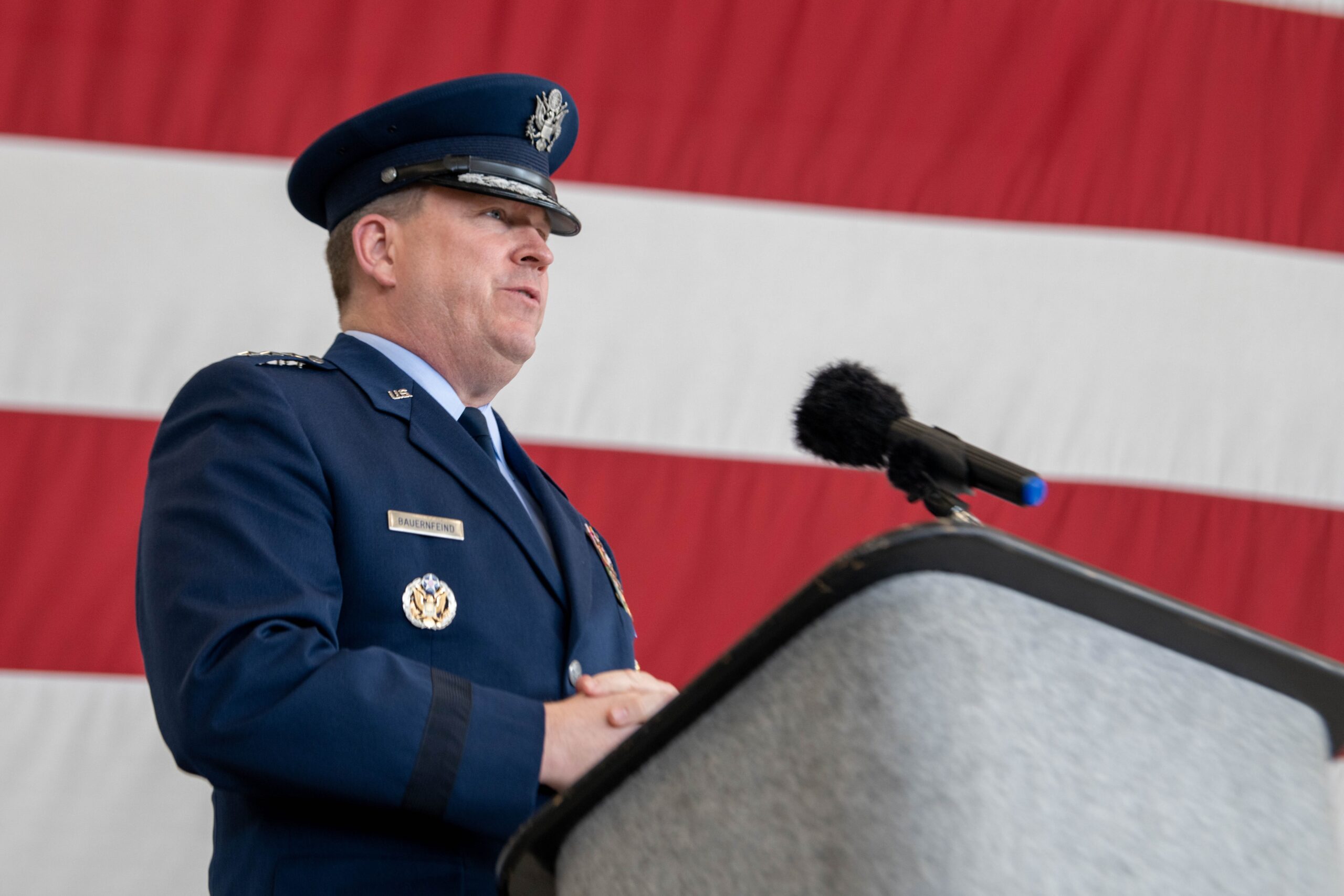
“The question is, is the CV-22 force appropriately organized, trained and equipped for safe, effective and efficient special operations,” Bauernfeind said.
While Bauernfeind cited the Air Force’s eagerness to see the CV-22 return to service, his support of the platform was more tempered than it had been when addressing reporters just five months earlier.
“We’re very confident in the mitigation steps that we’ve done,” Bauernfeind said at a September AFA round table closely following a Marine Corps MV-22 crash that left three dead. “With respect to the CV-22 at large, it is answering a long-held requirement and that no other capability can answer in the special operations community as we go forward.”

Reminded of his words on Tuesday, Bauernfeind reaffirmed the Air Force’s requirement for the capability the V-22 provides – that is, the ability to take off and land vertically for rapid inserts and extractions, but fly fast and over long distances like a fixed-wing aircraft thanks to forward-rotating nacelles – but tempered his support with concerns about the platform’s age and relevance.
“There’s also, as we continue to review, this acknowledgment that the V-22 is 1980s technology,” he said. “… And as we move forward, what are the future capabilities that we provide for the next-generation of capabilities?”
Bauernfeind cited the Air Force’s partnership with the Defense Advanced Research Projects Agency (DARPA) to develop a high-speed vertical takeoff and landing aircraft that can outpace the Osprey. Last year DARPA awarded four contracts worth up to $20 million to aviation companies Northrop Grumman, Bell Textron, Aurora Flight Sciences, and Piasecki Aircraft Corp. to develop prototype high-speed VTOL aircraft by 2027 as part of a project called Speed and Runway Independent Technologies (SPRINT).
“DARPA solves extremely hard problems,” Bauernfeind said. “But it also takes time, if they prove a concept, from that to production.”
There are also other developments in high-speed vertical lift that could potentially replace at least parts of the CV-22’s mission set in the future. This includes Bell’s next-generation tilt-rotor capability in the form of the V-280 Valor, a version of which is now being developed for the U.S. Army. The Valor concept was designed specifically to overcome some of the Osprey’s weaknesses. But this aircraft is also in another capability class than the Osprey. A larger design would be needed to directly replace the Osprey’s capabilities. Bell is exploring even more advanced high-speed VTOL concepts that it expects to bleed into DARPA’s efforts, as well.
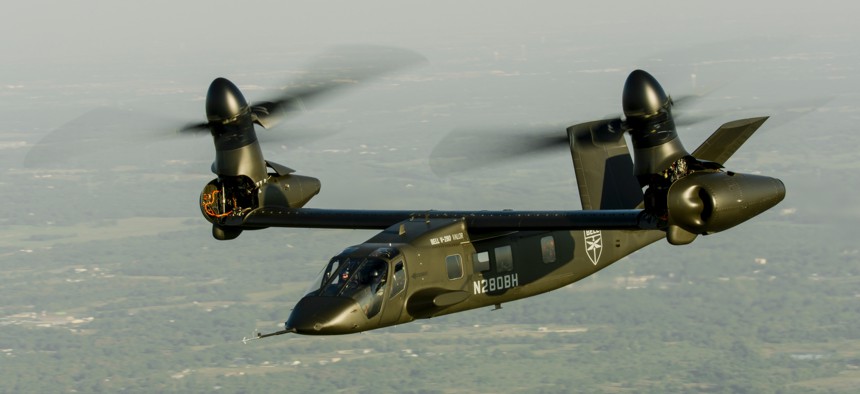
All 51 of the Air Force’s CV-22s have been grounded since December 6 of last year, when Bauernfeind directed an operational stand-down amid the crash investigations. The Navy followed suit the same day, pulling all Marine Corps and Navy V-22s out of operation. It’s the latest and longest in a series of operational groundings and stand-downs for the embattled aircraft, which has, among other issues, a well-documented history of clutch engagement issues. In the Air Force, the Osprey was grounded in 2022 for six weeks under previous AFSOC Commander Lt. Gen. Jim Slife following several clutch slips that led to hard landings. The whole fleet was partially grounded again in February 2023 to replace a gearbox component.
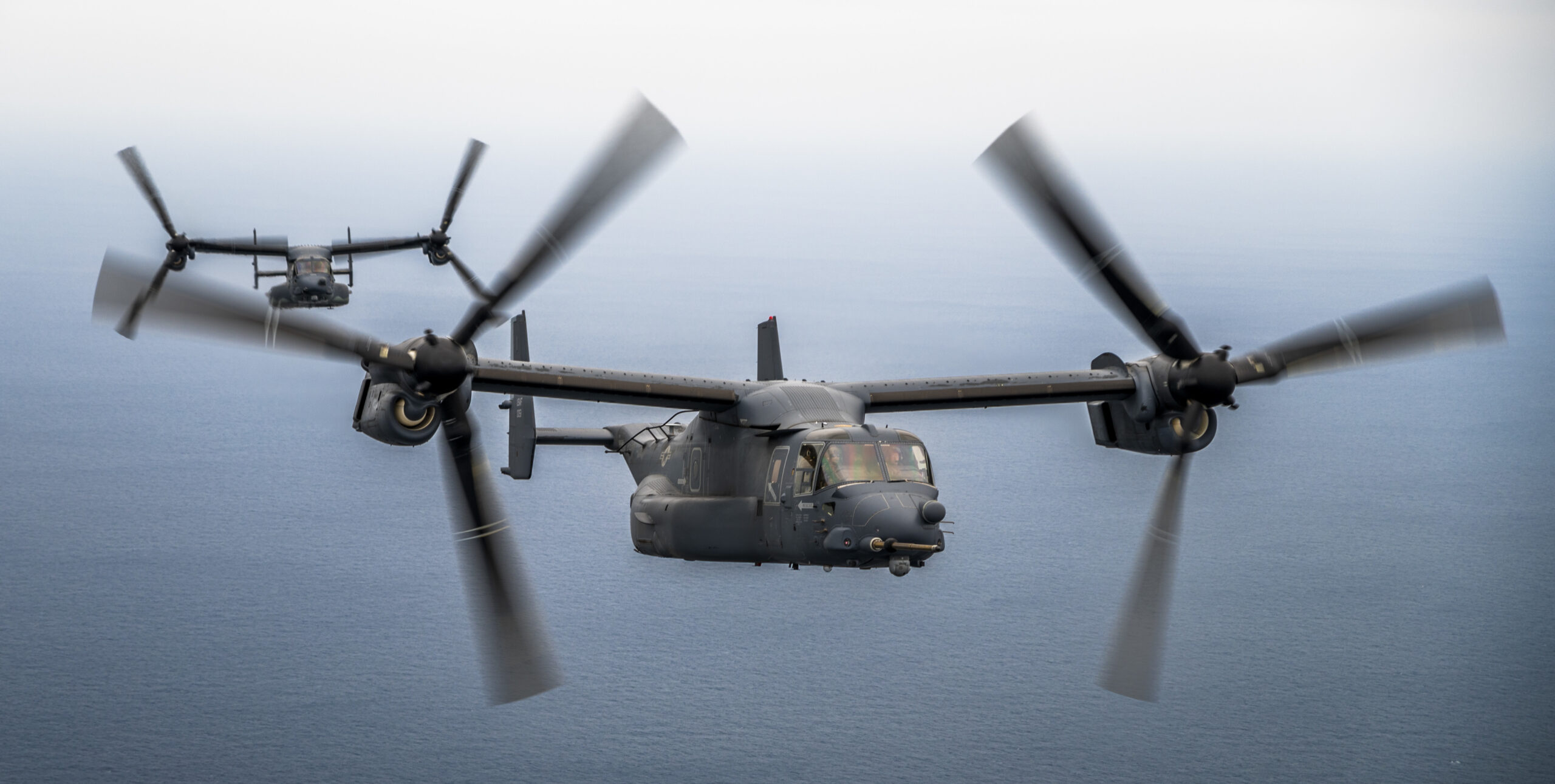
Bauernfeind said the services’ shared Osprey woes had spawned a joint weekly meeting of three-stars, including Vice Adm. Carl Chebi, commander of Naval Air Systems Command; Vice Adm. Daniel Cheever, commander of Naval Air Forces; and the Marine Corps’ deputy commandant for Aviation, Lt. Gen. Michael Cederholm.
“We’re constantly talking about, OK, what is the pathway forward to return?” Bauernfeind said. “… But just because we’re having those conversations does not mean you have the information you need yet.”
These joint meetings, and discussions with operational commanders, Bauernfeind said, also had allowed the services to “leverage other joint force capabilities” to meet operational requirements left unfilled by the Osprey. He did not specify, however, which aviation platforms were picking up CV-22 missions during the aircraft’s grounding, but we have seen multiple examples of this already.
“I am confident in the information flow in the conversations we’re having,” he said. “As you know, there is a strong desire to return to fly, because that is a capability we want to have. But we want to be able to return to fly with as much knowledge as we possibly can so that we can ensure that we are safely taking care of our crews as it comes forward.”

The clutch engagement issue, which has been implicated in numerous recent mishaps, but has not to date been linked to the Nov. 29 crash, has been documented in at least 15 instances, 10 of them on Marine Corps MV-22s, officials said in 2022. The issue, which occurs upon takeoff, involves a slip in which the clutch briefly loses contact with the rotor system. In addition to lost thrust caused by the slip, the re-engagement that follows can damage the aircraft. The services have tried to address this problem by replacing the Input Quill Assembly on certain aircraft. This element of the gearbox, which houses the clutch, is believed to wear out earlier than the other gearbox components, and may thus be a factor in the clutch slip episodes.
Other equipment issues have also dogged the V-22. Earlier this month, the Pentagon’s head weapons tester released a report showing the Navy’s CMV-22 Osprey – used for transport to and from aircraft carriers as a replacement to the aging C-2 Greyhound Carrier Onboard Delivery plane – was “not operationally suitable due to failures of many subsystems.” These include documented failures with the ice protection system.
Since the first Marines started training on the Osprey in 2000, there have been at least 10 fatal crashes causing 57 deaths. Nearly half the personnel lost, 23, died in two separate training crashes in 2000 before the Osprey had been declared deployable. Those tragedies led to the aircraft’s first grounding and redesign. Proponents of the V-22 will point out that, statistically, the Osprey remains one of the military’s safest planes – and that even clutch engagement issues are not unique to the platform. The variety of high-profile problems involving the V-22, however, have reinforced the perception that the aircraft is unsafe.
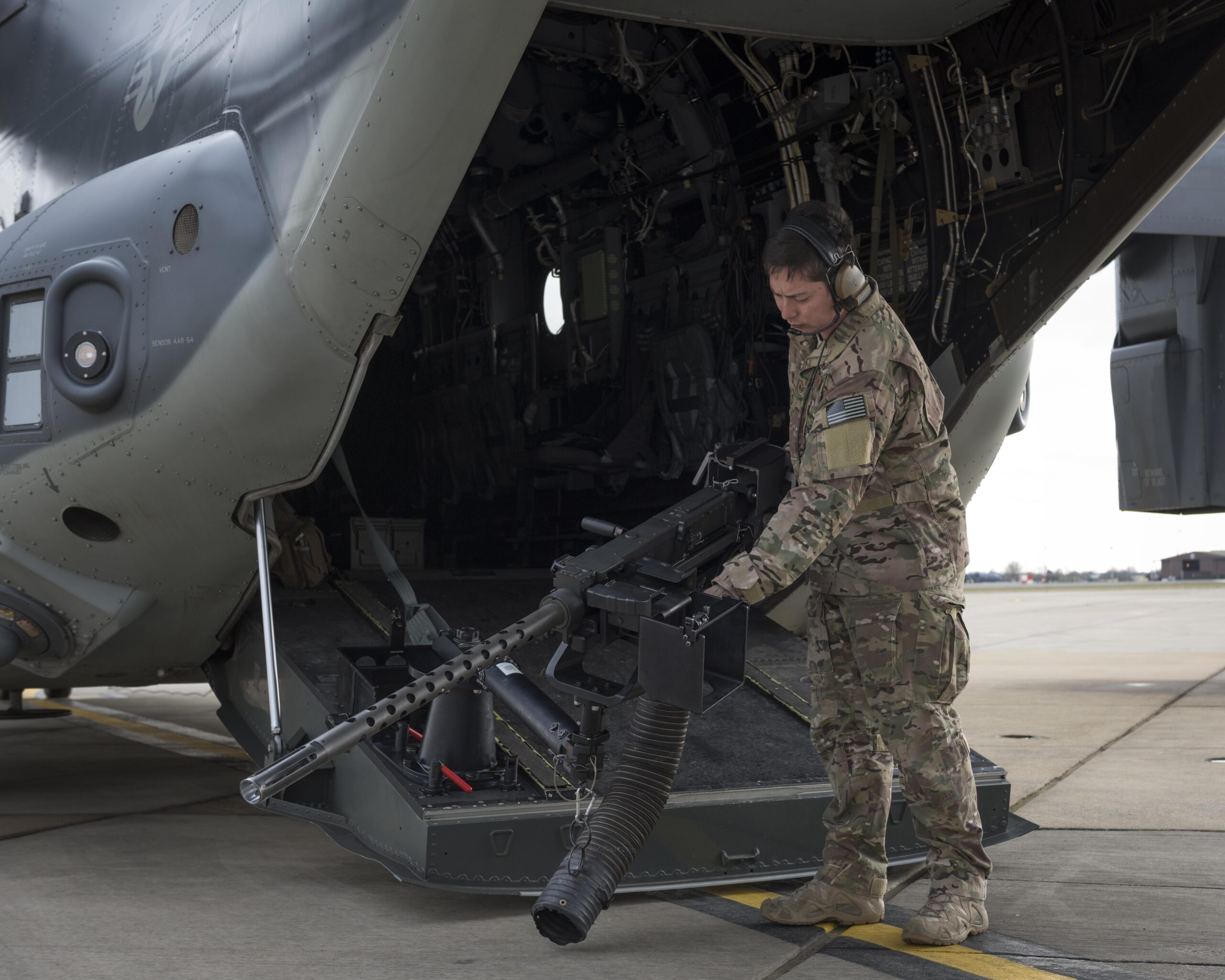
Still, as of now, the V-22 provides capabilities that no other platform can. And those capabilities are of immense value to AFSOC, which can be tasked with getting in and out of highly contested airspace under extreme conditions. The CV-22’s ability to fly at turboprop speeds at very low altitudes, and in any weather conditions through high terrain, as well as its high-end communications and defensive systems, make it a nearly impossible set of capabilities to walk away from.
But for now, those capabilities remain on hold. For how long, nobody knows — even AFSOC’s commander.
Contact the editor: tyler@twz.com
